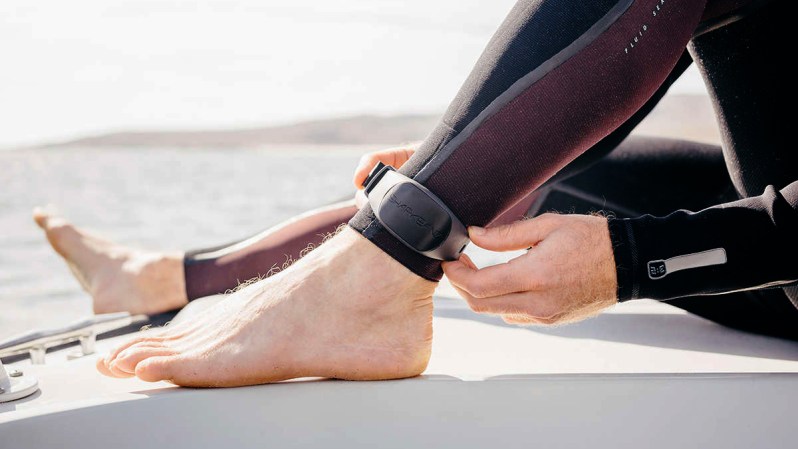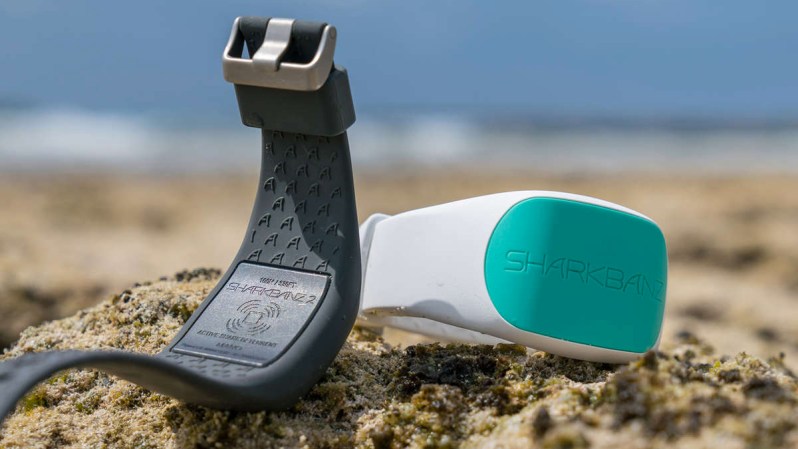While shark attack numbers seem to ebb and flow for any number of reasons, one thing is certain: they’re still a danger lurking below the waters of our major coastlines. In more frequent years, news of attacks have dominated headlines, resulting in an ever-increasing number of shark repellents hitting the market.
We’re going to take a closer look at one of the more popular options: Sharkbanz.
The technology emits high frequency magnetic waves from a rubberized band that surfers attach to their wrist or ankle. According to their science and testing, the waves are intended to interfere with a shark’s electrical senses, causing them to move away from anything they see as bait in the water (most notably dangling limbs from surfers paddling).

“You know it could happen at any time, but you don’t think of every situational circumstance before you get in,” says surfer Holly Pope Dyar, who was bitten by a shark at her home beach in South Carolina.
She suffered a minor injury, but the incident changed her perception of surfing alone. She was gifted a Sharkbanz and now wears one on each leg as added piece of mind.
Other surfers aren’t so sure about their effectiveness.
“I think the main issue is that we know so little about shark’s lives and behaviors. It’s such a fascinating and unknown world, but how do you find a solution if you don’t really know these animals,” says Honula co-founder Francesco Colicci. The company books adventure travel around the world with a focus on surfing; Colicci is a veteran of the sport himself.

The range of options is mind-boggling. From spray to acoustic to other magnetic choices like Sharkbanz, each offers some sort of effectiveness pledge, while clearly noting that nothing is 100% guaranteed.
Now that we’re in the heat of summer, the waters around major coastlines will reach some of their highest temperature of the year, attracting overly friendly sharks close to shore.
A device like Sharkbanz can help prevent unfortunate accidents, but is certainly one of a host of things you can do to avoid a shark attack.
Photos and video courtesy of Sharkbanz


